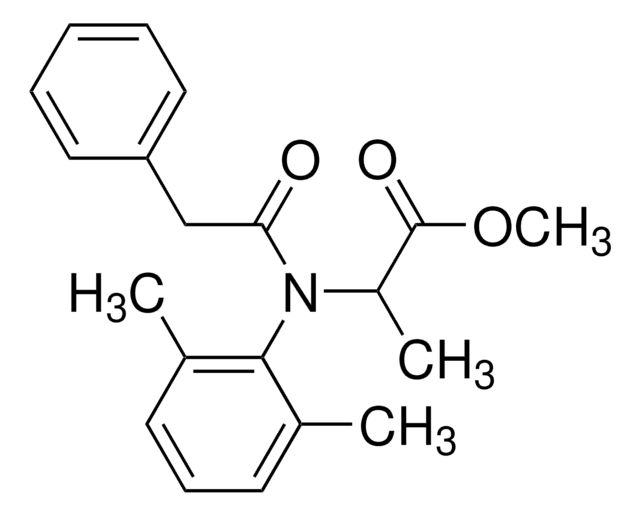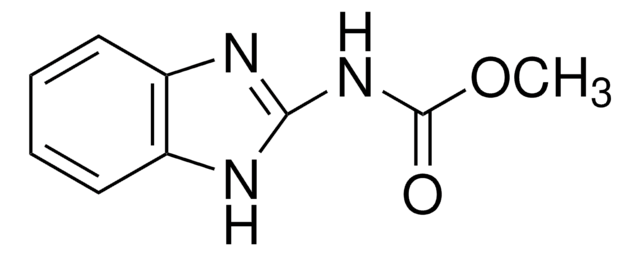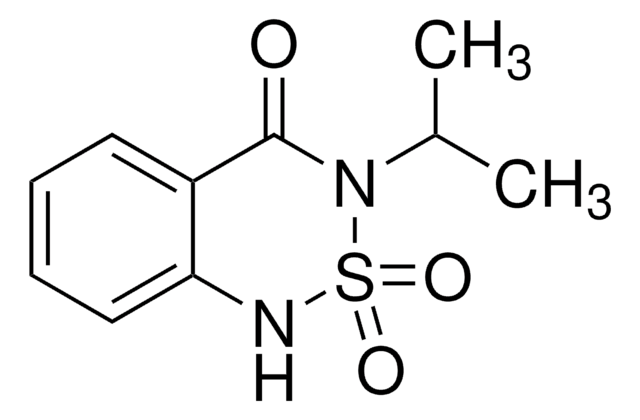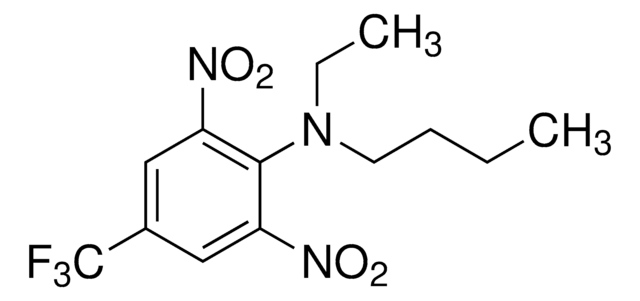Key Documents
31544
Benfuracarb
PESTANAL®, analytical standard
About This Item
Polecane produkty
klasa czystości
analytical standard
Poziom jakości
linia produktu
PESTANAL®
okres trwałości
limited shelf life, expiry date on the label
metody
HPLC: suitable
gas chromatography (GC): suitable
format
neat
ciąg SMILES
CCOC(=O)CCN(SN(C)C(=O)Oc1cccc2CC(C)(C)Oc12)C(C)C
InChI
1S/C20H30N2O5S/c1-7-25-17(23)11-12-22(14(2)3)28-21(6)19(24)26-16-10-8-9-15-13-20(4,5)27-18(15)16/h8-10,14H,7,11-13H2,1-6H3
Klucz InChI
FYZBOYWSHKHDMT-UHFFFAOYSA-N
Szukasz podobnych produktów? Odwiedź Przewodnik dotyczący porównywania produktów
Powiązane kategorie
Opis ogólny
Zastosowanie
- In bananas by application of a modified QuEChERS procedure followed by ultra high performance liquid chromatography coupled to tandem mass spectrometry (UHPLC-MS/MS).
- In honeybees, honey and bee pollen by liquid chromatography coupled to tandem mass spectrometry.
Informacje prawne
Hasło ostrzegawcze
Danger
Zwroty wskazujące rodzaj zagrożenia
Zwroty wskazujące środki ostrożności
Klasyfikacja zagrożeń
Acute Tox. 3 Inhalation - Acute Tox. 3 Oral - Aquatic Acute 1 - Aquatic Chronic 1 - Repr. 2
Kod klasy składowania
6.1C - Combustible acute toxic Cat.3 / toxic compounds or compounds which causing chronic effects
Klasa zagrożenia wodnego (WGK)
WGK 3
Temperatura zapłonu (°F)
>212.0 °F
Temperatura zapłonu (°C)
> 100 °C
Środki ochrony indywidualnej
Eyeshields, Faceshields, Gloves, type ABEK (EN14387) respirator filter
Wybierz jedną z najnowszych wersji:
Masz już ten produkt?
Dokumenty związane z niedawno zakupionymi produktami zostały zamieszczone w Bibliotece dokumentów.
Nasz zespół naukowców ma doświadczenie we wszystkich obszarach badań, w tym w naukach przyrodniczych, materiałoznawstwie, syntezie chemicznej, chromatografii, analityce i wielu innych dziedzinach.
Skontaktuj się z zespołem ds. pomocy technicznej










